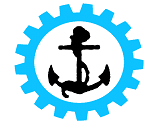Marine Fire Hydrant Solutions at Sea in Bangladesh
In the maritime industry, safety is paramount, and one crucial aspect of ensuring safety at sea is having reliable fire hydrant solutions on board ships. Bangladesh, with its extensive coastline and a thriving maritime sector, places great emphasis on these safety measures. This article will delve into Marine Fire Hydrant Solutions at Sea in Bangladesh, exploring their significance, types, installation, and maintenance procedures.
Table of Contents
- Introduction
- Importance of Marine Fire Hydrant Solutions
- Types of Marine Fire Hydrant Solutions
- Fixed Fire Hydrants
- Portable Fire Hydrants
- Installation Process
- Regulatory Compliance
- Location Considerations
- Plumbing and Connectivity
- Routine Maintenance
- Inspection Checklist
- Testing Procedures
- Repairs and Replacements
- Benefits of Efficient Fire Hydrant Systems
- Challenges in Maintaining Marine Fire Hydrants
- Innovations in Fire Hydrant Technology
- Case Studies: Successful Implementations
- The Role of Training and Awareness
- Conclusion
- FAQs
1. Introduction
The safety of vessels at sea is a matter of paramount importance, and ensuring effective fire suppression systems is a crucial part of it. Marine fire hydrant solutions play a pivotal role in safeguarding ships, crew, and cargo from potential disasters. In this article, we will explore the various aspects of these systems and their significance in the maritime industry of Bangladesh.
2. Importance of Marine Fire Hydrant Solutions
Marine fire hydrant solutions are the first line of defense against fires on ships. In a dynamic and often isolated environment like the open sea, having a reliable and efficient fire hydrant system is vital. These systems provide immediate access to water for firefighting purposes, minimizing the risk of catastrophic incidents.
3. Types of Marine Fire Hydrant Solutions
Fixed Fire Hydrants
Fixed fire hydrants are permanent fixtures on ships, strategically placed for easy access in the event of a fire. They are connected to the vessel’s water supply and are equipped with hoses and nozzles for firefighting.
Portable Fire Hydrants
Portable fire hydrants are mobile units that can be moved to different locations on the ship. They are often used in conjunction with fixed hydrants to provide flexibility in firefighting efforts.
4. Installation Process
Regulatory Compliance
Before installation, it’s essential to adhere to the maritime safety regulations set forth by the authorities. Compliance ensures that the system is correctly designed and installed to meet safety standards.
Location Considerations
Choosing the right locations for fire hydrants is critical. They should be easily accessible and strategically positioned to cover all areas of the ship effectively.
Plumbing and Connectivity
Proper plumbing and connectivity are essential to ensure that water flows seamlessly through the hydrant system. Any leaks or blockages can compromise firefighting efforts.
5. Routine Maintenance
Maintaining marine fire hydrants is an ongoing process to ensure their reliability during emergencies.
Inspection Checklist
Regular inspections should be carried out to check for wear and tear, corrosion, and any signs of damage.
Testing Procedures
Testing procedures, including flow tests and pressure tests, help verify that the system is functioning correctly.
Repairs and Replacements
Any damaged or malfunctioning components should be promptly repaired or replaced to maintain the system’s integrity.
6. Benefits of Efficient Fire Hydrant Systems
Efficient fire hydrant systems offer several advantages, including rapid response times during emergencies, reduced damage to the vessel, and enhanced safety for the crew.
7. Challenges in Maintaining Marine Fire Hydrants
Maintaining fire hydrants at sea can be challenging due to the harsh marine environment, saltwater exposure, and the need for regular inspections.
8. Innovations in Fire Hydrant Technology
Advancements in technology have led to more efficient and reliable fire hydrant systems, including automated monitoring and remote control options.
9. Case Studies: Successful Implementations
Examining real-life examples of successful fire hydrant system implementations can provide valuable insights for shipowners and operators.
10. The Role of Training and Awareness
Proper training and awareness among the crew regarding the operation and maintenance of fire hydrants are crucial for their effective use.
11. Conclusion
In Bangladesh’s maritime industry, marine fire hydrant solutions are indispensable for ensuring the safety of vessels and their occupants. By understanding their significance, types, installation procedures, and maintenance protocols, shipowners and operators can enhance safety at sea significantly.
12. FAQs
- How often should marine fire hydrants be inspected?
- Regular inspections should be conducted at least once a month, with additional checks during crew drills.
- Can portable fire hydrants replace fixed ones?
- Portable hydrants complement fixed ones but should not replace them as they provide flexibility in firefighting efforts.
- Are there specific regulations for fire hydrant systems on ships?
- Yes, maritime authorities have strict regulations governing the design, installation, and maintenance of fire hydrant systems on ships.
- What are the common challenges in maintaining marine fire hydrants at sea?
- Challenges include corrosion, saltwater exposure, and the need for routine inspections in a challenging marine environment.
- Are there any innovative technologies for fire hydrant systems?
- Yes, advancements in technology have led to automated monitoring and remote control options for fire hydrants.
Get Access Now:
In conclusion, the safety of maritime operations in Bangladesh hinges on the effectiveness of marine fire hydrant solutions. These systems are not just equipment; they are lifelines in emergencies, and their proper installation and maintenance can save lives and protect valuable assets at sea. Stay safe, stay prepared.


